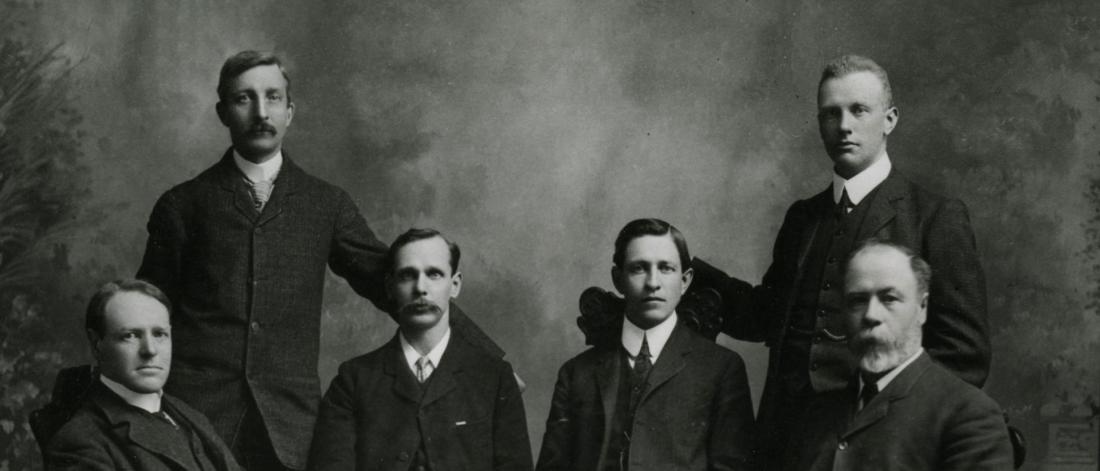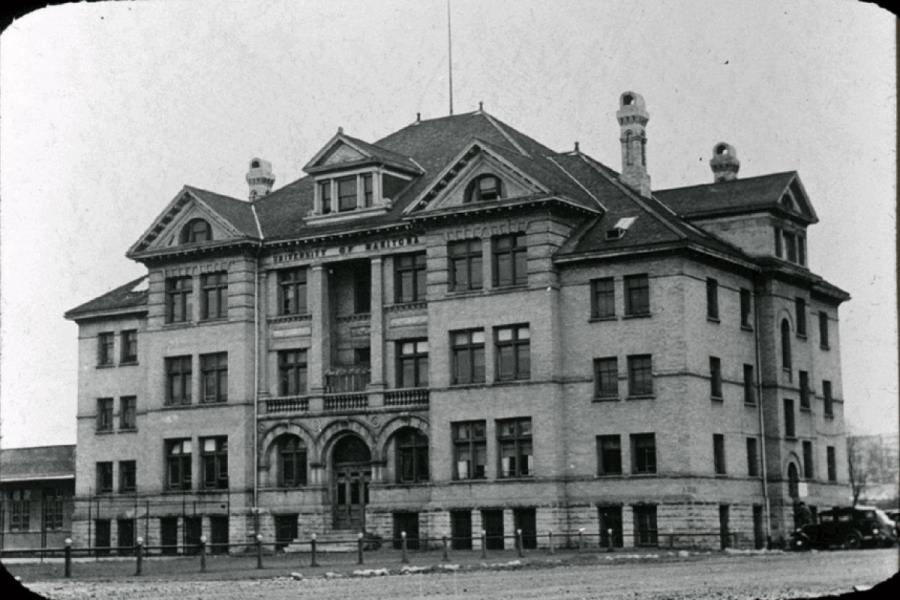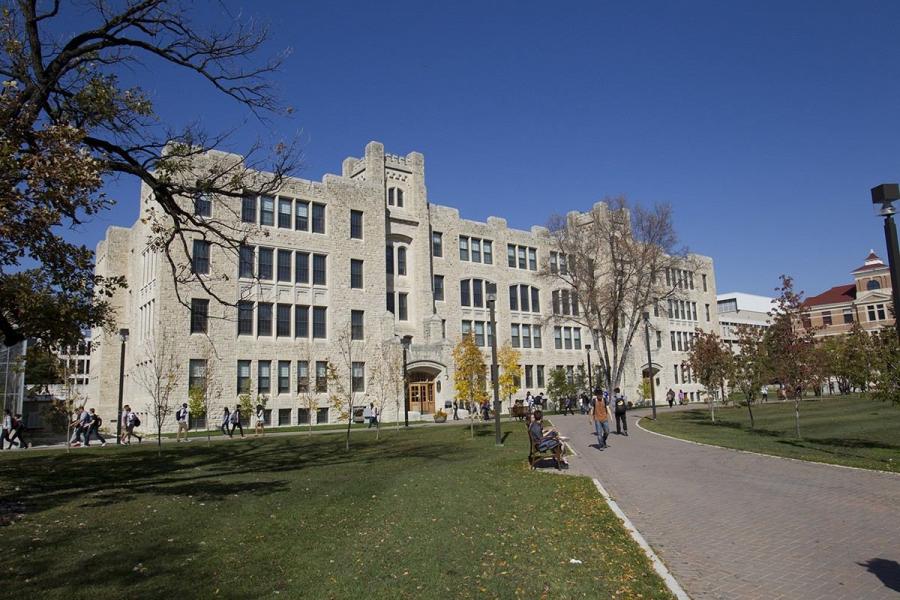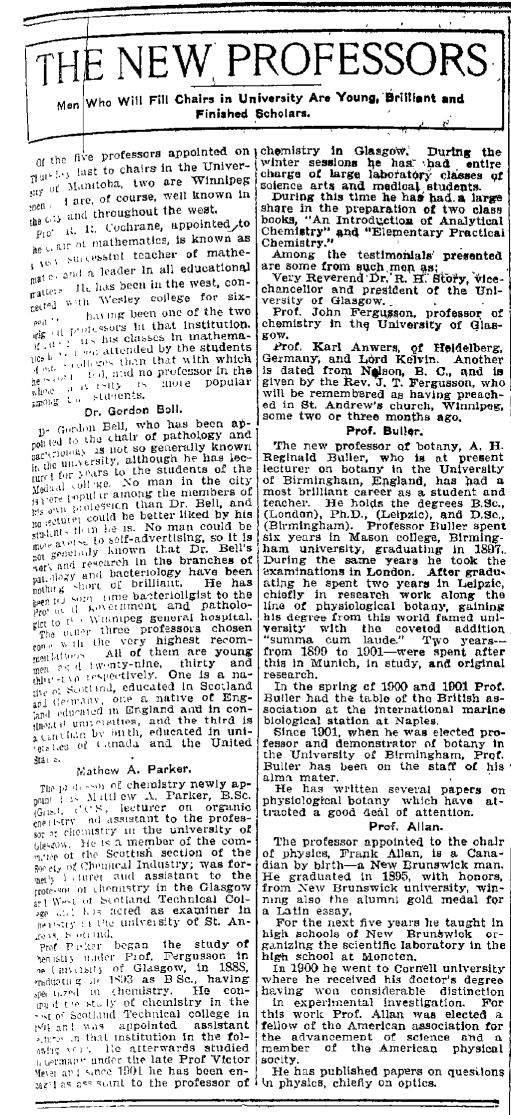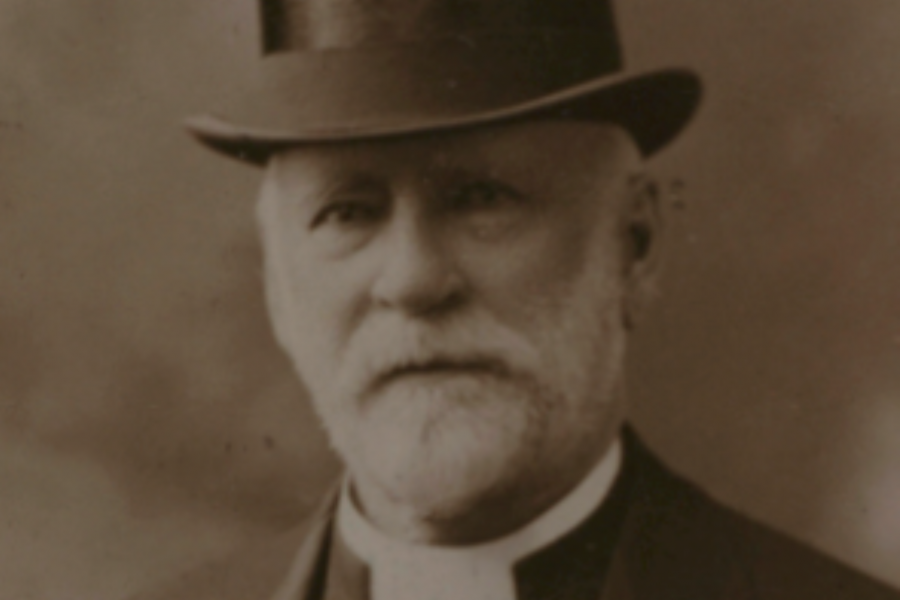On 1 July 1970, the Faculty of Science was officially an independent faculty once more since its initial amalgamation with the Faculty of Arts in 1921. Prior to the separation, Dr. A. Lloyd Dulmage was acting Dean of Arts and Science (1969-1970), however, following the separation, Dr. Donald McCarthy assumed deanship of the Faculty of Arts (1970-1977) and Dr. Robert Connor, the former Associate Dean of Arts and Science and Professor of Physics was appointed as the first Dean of the Faculty of Science. With the Faculty of Science in its infancy, the first duty of the Science Council was to appoint Dean Sibley as the first Dean Emeritus of Science in recognition of his years of service to Science at the University of Manitoba. That same year a further shift in administration occurred, Professor of Chemistry and President, Dr. Hugh Saunderson retired from the University after 16 years in the presidency role and Dr. E. Sirluck, another University of Manitoba alum, assumed the role and remained until 1976.
Not only did the Faculty of Science become independent in 1970, it saw the establishment of the Department of Computer Science. The first Head of Computer Science was Dr. Ralph G. Stanton who served until his retirement in 1989. During his tenure, he saw the establishment and rapid advancement of the department, including a successful cooperative education program. That year also saw the renaming of the Department of Geology to the Department of Earth Sciences.
In the early 1970s, the Faculty of Science experienced continual infrastructure expansion. This began with the opening of the “Zoo-Psyc” building, which was later named the Duff Roblin Building in honour of the 14th Premiere of Manitoba, Dufferin “Duff” Roblin (1917-2010). One-half of the Duff Roblin Building would become home to the Department of Zoology and the other half to the Department of Psychology. Next, in 1972, the Machray Hall Building opened and was named in honour of the first Chancellor of the University of Manitoba, The Most Reverend Robert Machray. This building became the home of the Faculty of Science Dean’s Office, Departments of Mathematics and Astronomy later Mathematics, Statistics and Computer Science. Not only were there advancements in the infrastructure and teaching facilities, but in 1972 the Faculty of Science opened resource centres to supply out-of-class support for students: Calculus Crisis Centre, The Resource Centre in Chemistry and the Tutorial System in Physics.
The same year that Dr. Connor was appointed as Dean, he requested and received permission for the hiring of two Associate Deans. Dr. Phil Issac, a botanist and the Provincial Mycologist was tasked to oversee the Department of Botany/Zoology, Dr. Iain Cook (1970-1976) then Dr. Norm Campbell and Dr. Brian MacPherson were tasked with looking over the student-oriented aspects of the Faculty and finally Dean Connor was responsible for everything else.
In 1973, University of Manitoba faculty members sought certification from the Manitoba Labour Board to become an official Bargaining Unit. The University of Manitoba Faculty Association (UMFA) was accepted as a Bargaining Unit on 15 November 1974. At this time, there were discussions as to whether Department Heads should be considered a part of the union. Science felt they should not be and Arts felt Head should be included. Following the discussion with the Manitoba Labour Board, the Board ruled that the Heads were to be included as UMFA members.
The Department of Applied Mathematics was a new department established in 1974, with Dr. Felix A. Arscott as Head (1974-1986).
The number of Science faculty members was constantly on the rise, in 1975 there were 219 faculty members, a 58-person increase since the inaugural year of the Faculty of Science 5 years earlier. Student enrollment on the other hand was following an opposite trend. In 1970, there were approximately 3530 undergraduate science students, then slowly decreased to 2960 in 1980, then peaked again in 1983 at 4440 students.
Astronomy education continued to advance, following the opening of the Lockhart Planetarium in 1962 and the Glenlea Astronomical Observatory opened in 1976. The Glenlea Observatory is located approximately 20 kilometres south of the University of Manitoba Fort Garry Campus and free from the glare of city lights. This facility is now equipped with a 40cm Evans’ Telescope and is a teaching facility for first and second-year astronomy courses.
In 1979, Dr. Connor retired as Dean of Science and was succeeded by chemist, Dr. Charles C. Bigelow.
The Department of Computer Science was on a rapid expansion throughout its first ten years since the inception of the department. In 1982, Dr. Mike Doyle, head of Computer Science, led the development of a Cooperative Education (Co-op) program. This was the first co-op program of its kind at the University of Manitoba and remained as such for many years. The initial cohort of the Computer Science co-op program was made up of 30 students and rapidly grew due to its incredible success. The Computer Science co-op program grew from its initial 30 students to become part of a strong Faculty of Science Co-op program where there are over 900 students in 2019. Around the same time of the co-op program development, computer science was a rapidly developing and recognized field, resulting in a spike in computer science enrollment at the University of Manitoba in the mid-1980s.
Twenty years after the opening of the Cyclotron Research Laboratory, the facility officially changed its name to the Accelerator Center. In 1986 the scope of research was expanded in the Accelerator Center due to Dr. Jasper McKee, Professor of Physics, broadening the research areas rather than being centrally focused on nuclear physics. However, a few years later, the Accelerator Center ceased operations in 1989, closing its doors after over 20 years of research.
That same year, Dr. Bigelow left the role as Dean of Science when Dr. Harley Cohen assumed the role until 1994. Following the departure of Dr. Cohen in 1994, Dr. James C. Jamieson stepped into the role of Dean of Science in 1994 and remained until 2004 when Dr. Mark D. Whitmore was appointed as Dean of Science.
In 1990, the Faculty of Science appointed the first female department head. Dr. Lynn Batten was appointed as Head of Mathematics and following her time at the University of Manitoba she went on to Deakin University in Australia.
In 1995, the Faculty of Science celebrated 25 years as an independent faculty and concluded with a celebration on 15 September 1995.
“I would like to say for the half century celebrations, ‘Same place, same time’, but I fear not. Those celebrations will have to be left in the hands of others. – Robert Connor, 15 September 1995
In 1998, following a change in headship a few years prior in the Department of Applied Mathematics, the Departments of “Mathematics and Astronomy” and “Applied Mathematics” were reconfigured. The Mathematics Division of Mathematics and Astronomy was combined with the Department of Applied Mathematics and was renamed and is now the present-day Department of Mathematics. Finally, the Astronomy division of the Department of Mathematics and Astronomy was transferred to the Department of Physics and was renamed to the present-day Department of Physics and Astronomy.
Since 1912, the original Department of Geology and Mineralogy underwent a variety of name changes and leadership changes over the course of its history. By 1986, the Department underwent its final name change from the Department of Earth Science (1970-1986) to the Department of Geological Sciences.
That same year, the Faculty of Science was continually expanding and justified the construction of a new building. The Wallace Building was built to house the Department of Geological Sciences. However, by 2003, the Senate and the Board of Governors approved the formation of a new faculty and the transfer of the Department of Geological Science to what became the Clayton H. Riddel Faculty of Environment, Earth, and Resources.
The Buller Building had been a site of major renovation for over 10 years, beginning in 2001. These extensive renovations brought this historic research facility built in 1932 up to date with modern facilities and equipment. Extensive modifications to sewer systems, electrical, roofing, flooring and more occurred prior to the major upgrades that began in phase one in 2006. Disruptions to research activities due to the constant movement of labs, offices and equipment occurred over the entire renovation period. The renovations were on a smooth path to completion until 2009 when a fire in the Duff Roblin building caused major congestions as many faculty offices and research groups were relocated. The Duff Roblin Building suffered major damages as a result of the fire which caused over $40M in damage and years of repairs.
Following the construction of the new Engineering & Information Technology Complex (EITC) in 2005, the Department of Computer Science made the move from Machray Hall to the newly built Engineering Complex. Science education in the life sciences was found across many departments in the Faculty of Science. In the past, students wishing to study biological sciences would take courses from the Department of Botany, Department of Zoology, or the Biology Teaching Unit. In 2007, Botany, Zoology and the Biology Teaching Unit amalgamated to form the Department of Biological Sciences under the leadership of Dr. Judith Anderson (2007-2017), the first Head of Biological Sciences and the second female department head in the Faculty of Science History.
Beginning in 2008, the Manitoba Chemical Analysis Laboratory (MCAL) was established in the Department of Chemistry. Following a $1M renovation, the new MCAL facility is a leading teaching and research facility. Further renovations to both the Parker Chemistry Building and Armes Lecture Theatre began the following year and would proceed and continue over the next decade. Renovations included the organic chemistry teaching labs, the physical chemistry teaching lab named in honour of Dr. McBride, the first-year undergraduate chemistry teaching labs, the Hultin Memorial Study Room in memory of Dr. Phil Hultin, Armes lecture theatres, the Science Students’ Association Lounge, the Science Courtyard and finally the Faculty of Science Dean’s Office in Machray Hall.
By May 2011, the majority of the indoor renovation projects previously started were nearing completion and work on the exterior began, including some landscaping. However, renovations to undergraduate teaching labs were started. In 2013, renovations were completed in the Buller Building with only minor modifications and upgrading of equipment remaining. The Departments of Biological Sciences and Microbiology returned and research activity resumed in full force after over 12 years of renovations.
A few years prior, the College of Pharmacy relocated to the University of Manitoba Bannatyne Campus to its new home in the Apotex Building. Following renovations, the Department of Biological Sciences moved into its new home in the old Pharmacy Building in 2012 and was renamed the Biological Sciences Building.
Dr. Stefi Allison Baum was appointed Dean of the Faculty of Science in 2014, first female Dean of Science at the University of Manitoba. Under the directorship of Dean Baum, the Faculty of Science implemented its first Indigenous Strategic Plan, which led to the development of the Wawatay Project in 2020.
After the Cyclotron Particle Accelerator Laboratory closed its doors in 1986, the space remained vacant for years. However following an extensive $16.7 million renovation, the space became the home for the new Manitoba Institute for Materials in 2016. In 2019, further renovations were done in the Faculty of Science. The Faculty of Science Courtyard was completed along with updates to the Armes Building.
Over the decades, the Faculty of Science has become a hub for groundbreaking scientific research and education, across many disciplines. The accomplishments of our faculty, staff and alumni are impressive.
Our history has proven that our institution continues to have a global impact with will continue for not only the next 50 years but for generations to come. Our accomplishments include both nominations and later recipients of Nobel Prizes, world-renowned rocket scientists, leaders in spectroscopy and many many more. We are excited to see what the future holds for scientific education and research in the Faculty of Science at the University of Manitoba!
“It’s a place and point in time that allows us to reflect on where we’ve been, what we’ve accomplished, how we’ve changed as an institution and allows us to think about what are we going to do in the next 50 years?” – Dr. Stefi A. Baum, , Dean of Science

